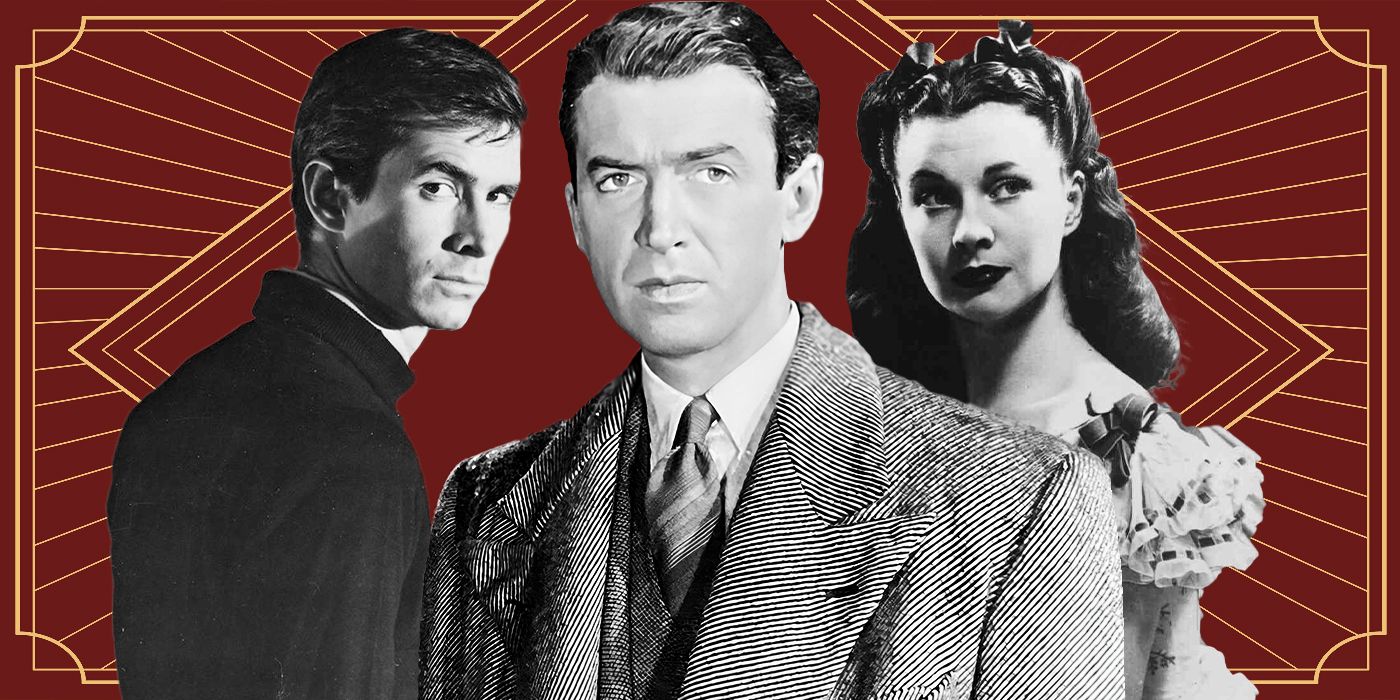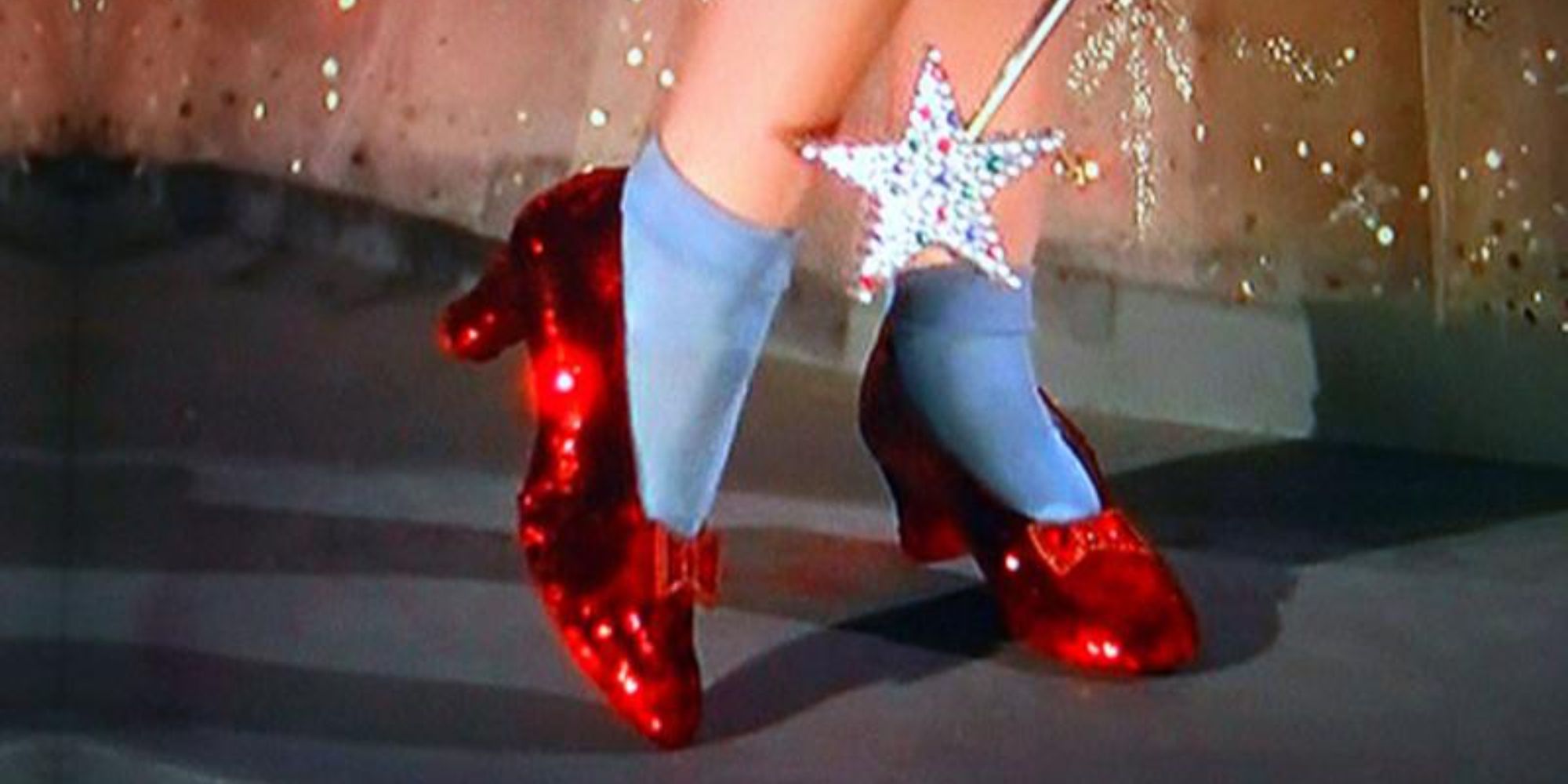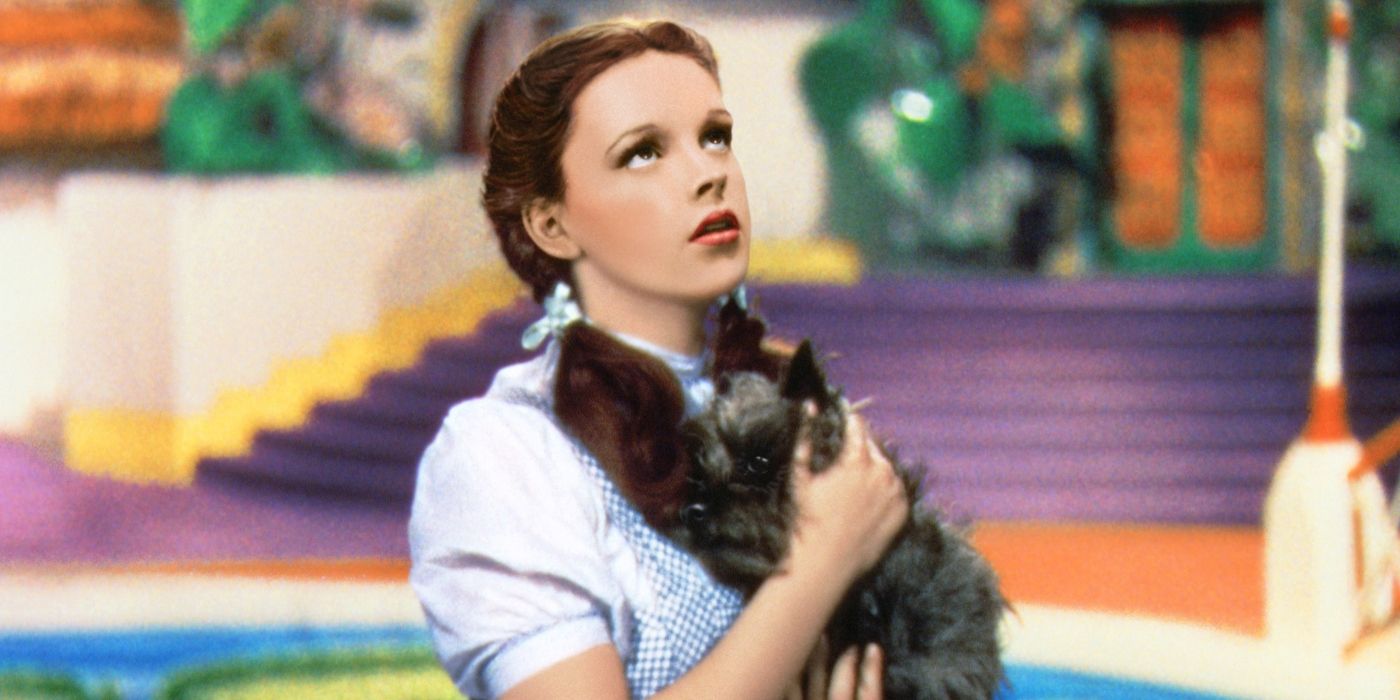“Those slippers will never come off—as long as you’re alive,” screeches the Wicked Witch of the West. Dorothy Gale’s ruby slippers are among the most influential props in Hollywood history. Instantly recognized by their dazzling, red gleam, the slippers became a staple of MGM’s The Wizard of Oz and an inseparable wardrobe piece from Judy Garland’s career. The ruby slippers, originally owned by the Wicked Witch of the East, have since achieved a legacy far beyond their cinematic role, and so has its origin story.
The 1939 film made many major changes from the children’s book,The Wonderful Wizard of Oz, written by Lyman Frank Baum. The Emerald City was never green, Professor Marvel doesn’t exist, and the “Somewhere Over the Rainbow” song wasn’t even a thing. The iconic ruby slippers that “inspired magic and dreams,” as Michael Shaw once said to Forbes, were originally silver in Baum’s story. The color change was far from unreasonable, as it was influenced by the visionary choices of the production’s creative team to take advantage of Technicolor.
The Ruby Slippers Were Originally Silver in Lyman Frank Baum’s Book, The Wonderful Wizard of Oz
The moment the young Dorothy Gale from Kansas opens the door and enters the magically vibrant world of Oz is one of the most influential scenes in Hollywood, and rightly so. Engraved in our nostalgic memory, it’s an explosive, breathtaking, and jaw-dropping experience to watch to this day. However, a common misconception is that T he Wizard of Oz was the first movie to achieve this distinct color palette. The World, The Flesh, and the Devil (1914) was the first feature-length film to be in color, which followed the Kinemacolor process. By the time MGM’s famed picture was in pre-production in the late 1930s, animators and filmmakers started to embrace a new evolving color technique.
The transition from black-and-white to color film opened up new artistic possibilities, and Technicolor was a groundbreaking process in Hollywood’s toolkit. Technicolor had already proved successful in films like Snow White and the Seven Dwarfs and The Adventures of Robin Hood. Yet, color filmmaking was still rare, as it was costly and required specific lighting equipment and special film stock. With the choice to film The Wizard of Oz in Technicolor, the studio execs decided to maximize its potential by making deliberate artistic choices about color to enhance the story’s visual impact.

Related
The 20 Most Iconic Movie Characters From the Golden Age of Cinema, Ranked
The most recognizable characters from an iconic age of American cinema.
In L. Frank Baum’s book, Dorothy’s shoes are described as silver, according to The Smithsonian. The author intended the silver slippers to have a quiet, understated magic, symbolizing themes of transformation and empowerment in subtle ways. The silver shoes were imbued with mystical powers, enabling Dorothy to travel between worlds, but they remained modest in appearance. Baum’s silver slippers held significant metaphorical value, especially in the context of the late 19th-century political landscape. Some literary analysts have argued that Baum’s choice of the silver slippers was a nod to the economic debates of the time regarding the gold standard and the call for “free silver,” or silver-based currency. Although this remains speculative, many believe the silver slippers subtly referenced these issues, adding a layer of socio-political meaning.
As reported by EW, an early draft of the film from May 1938 had kept the silver color in, but the decision to change Dorothy’s slippers to red was a move to utilize the eye-grabbing power of Technicolor. Costume designer Gilbert Adrian, a fashion legend behind many of MGM’s most iconic costumes, knew red would not only contrast beautifully against the Yellow Brick Road but would also resonate with audiences on an emotional level. The goal was to create a sensational experience, allowing the audience to fully appreciate Technicolor’s capabilities through Dorothy’s magical journey.
‘The Wizard of Oz’ Changed the Color of Dorothy’s Slippers Due to Techincolor’s Power
Guinness World Records states Adrian designed the ruby slippers from white silk pumps dyed red, then overlaid with dozens of burgundy sequins. The designer also added three glass jewels to each shoe’s bow, which further emphasized their magical allure. Hollywood historians estimate that at least seven pairs of ruby slippers were made for Judy Garland’s character, though they were used for different shots and are now scattered across museums, private collections, and a pair even in the possession of the Smithsonian’s Museum of Natural History.
The Legacy of an Iconic Prop
Beyond the movie, Dorothy’s ruby slippers have attained cultural icon status. The slippers represent a testament to Hollywood’s Golden Age and remain perhaps the most famous movie memorabilia in the world. When a pair went missing from the Judy Garland Museum in Minnesota in 2005, it sparked a nearly 13-year mystery, only to be recovered in 2018 thanks to an FBI investigation. Another pair, known as “The People’s Shoes,” is permanently housed at the Smithsonian National Museum of American History, where they continue to draw thousands of visitors each year.
The ruby slippers represent much more than costume design; they capture the spirit of the film and the emotions of viewers who, like Dorothy, may have dreamed of far-off lands only to realize that “there’s no place like home.” Their dazzling appearance, made possible through Technicolor and Gilbert Adrian’s expert craftsmanship, symbolizes the courage, innocence, and hope of a young girl thrust into an extraordinary world. Continuing to inspire modern designers, artists, and filmmakers, the transformation from simple silver to brilliant ruby is emblematic of Hollywood’s ability to define an unshakable, visual legacy.

The Wizard of Oz
- Release Date
- August 25, 1939
- Director
- Victor Fleming
- Cast
- Margaret Hamilton , Jack Haley , Judy Garland , Bert Lahr , Ray Bolger
- Runtime
- 102 minutes
The Wizard of Oz is available to stream on Max in the U.S.
Source link



